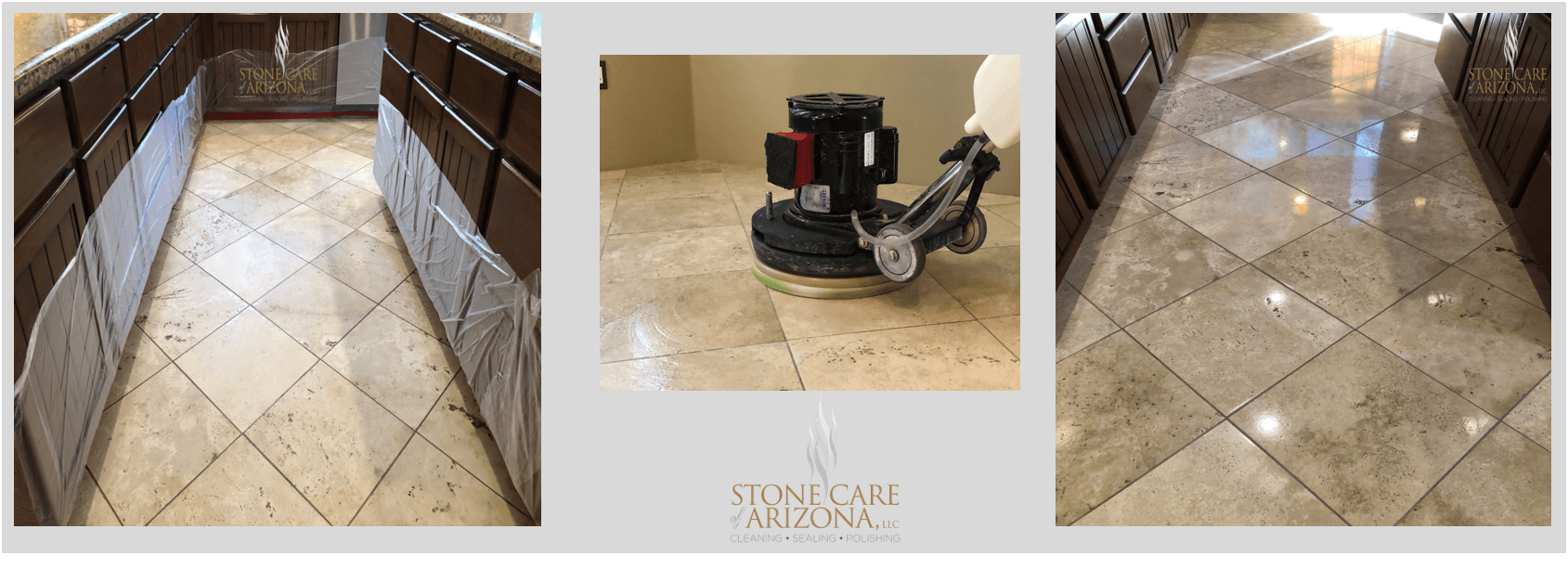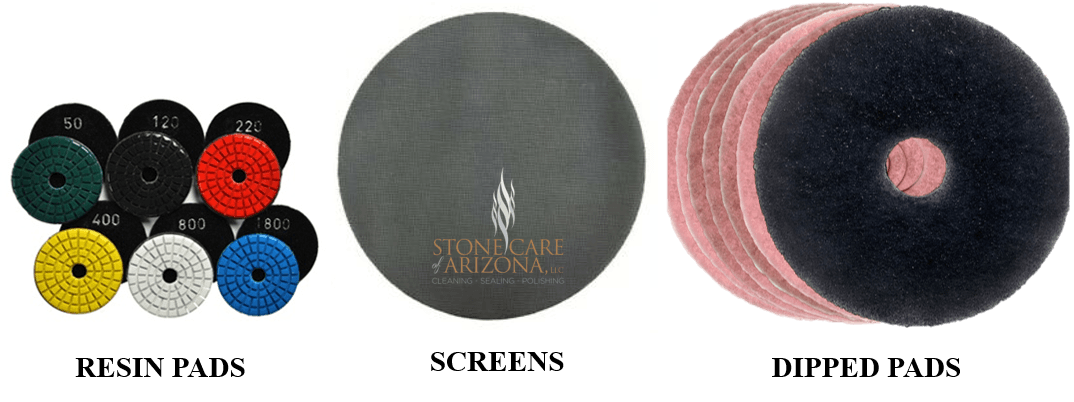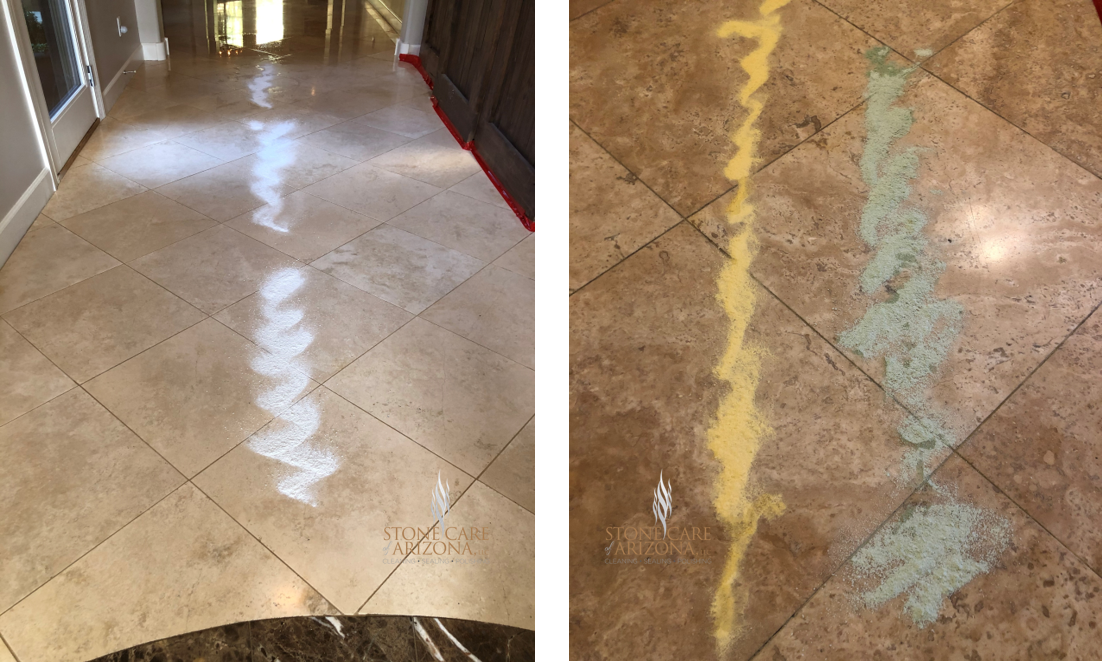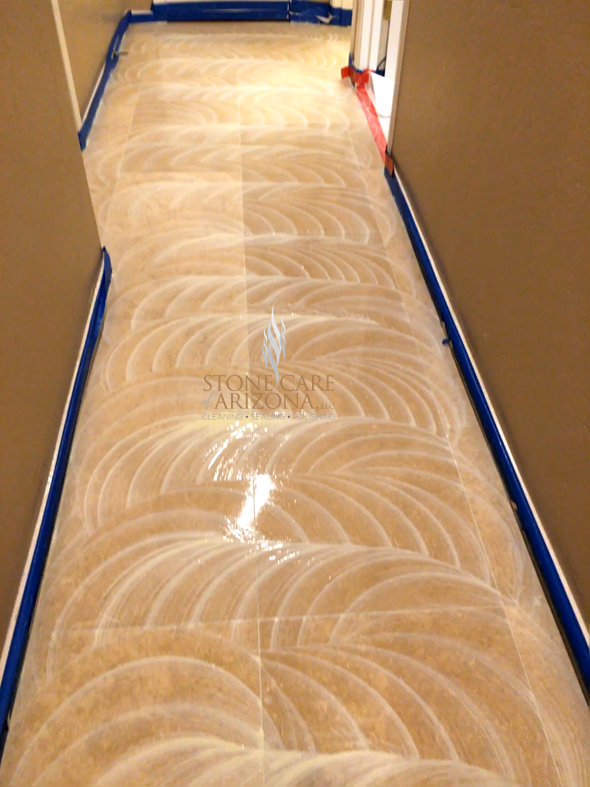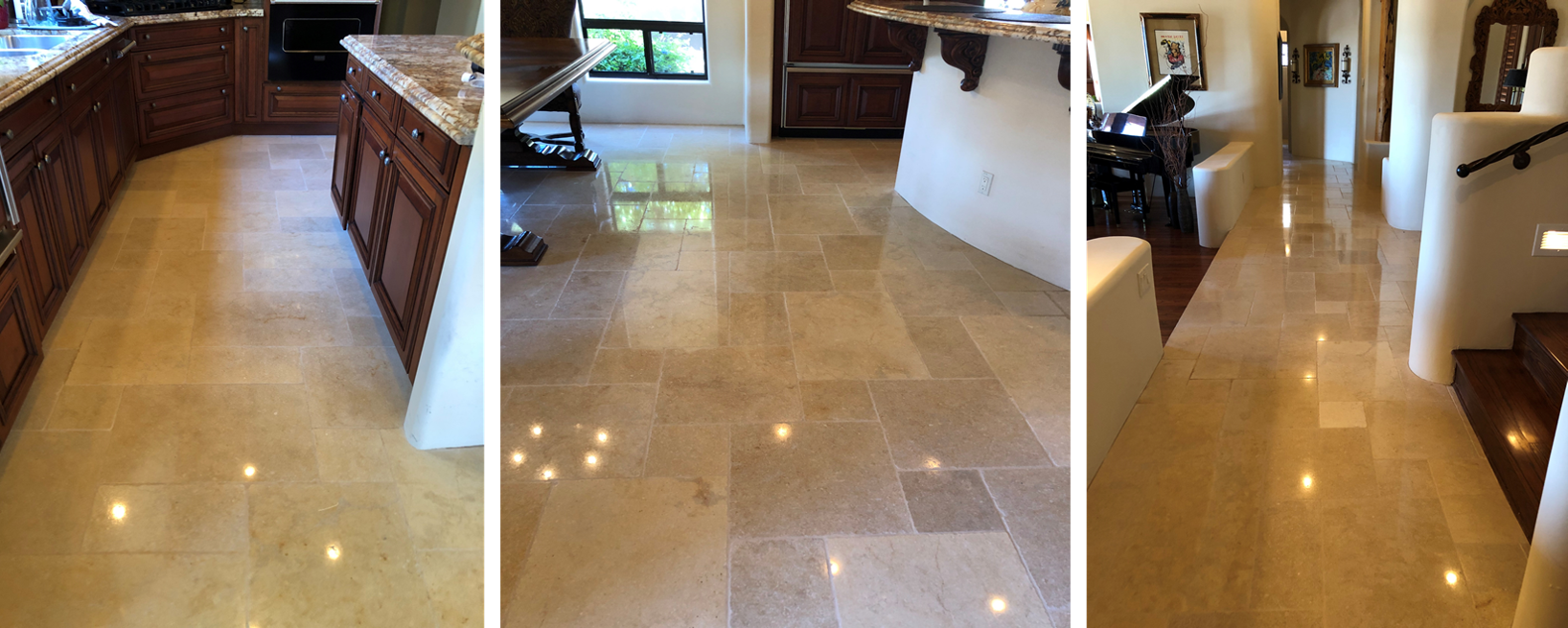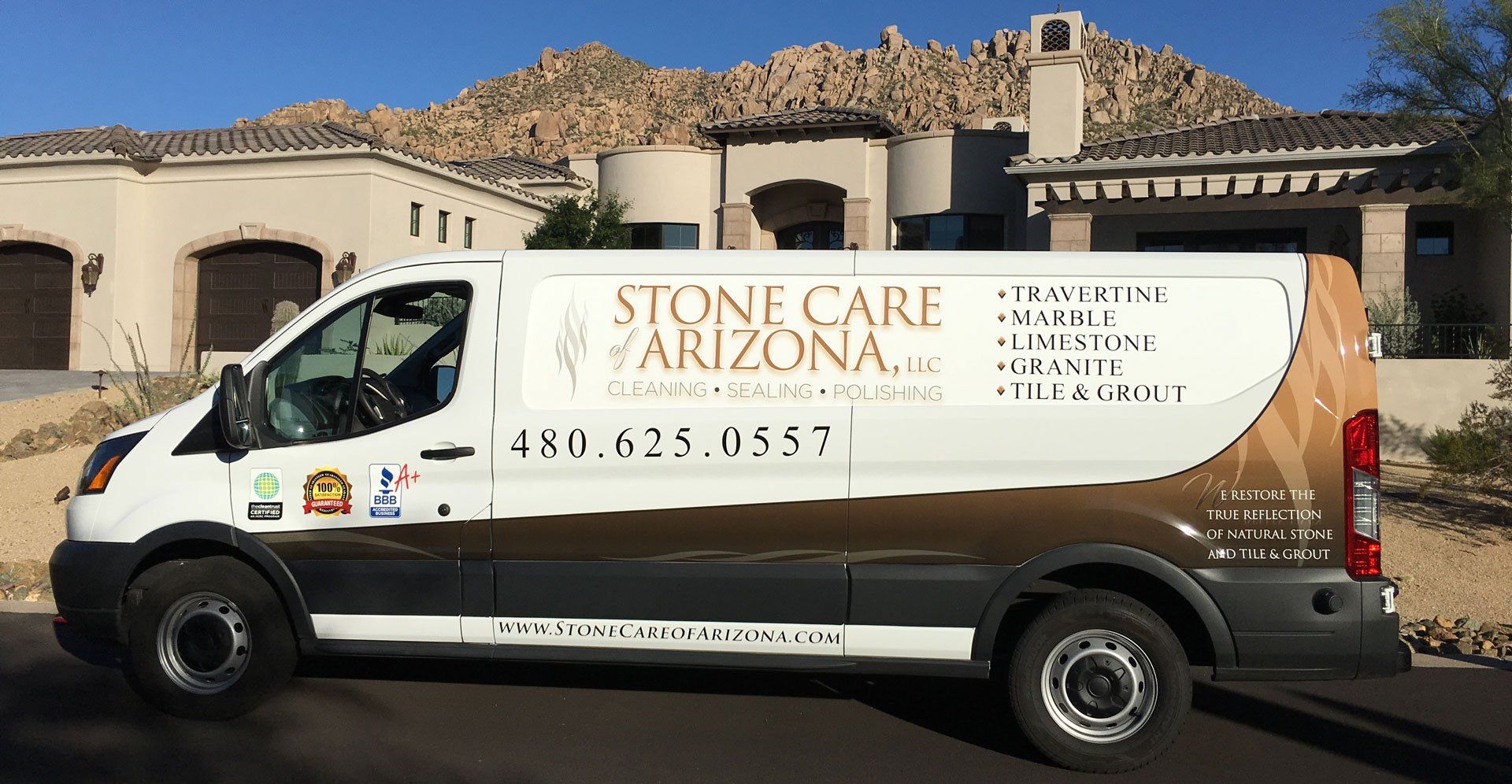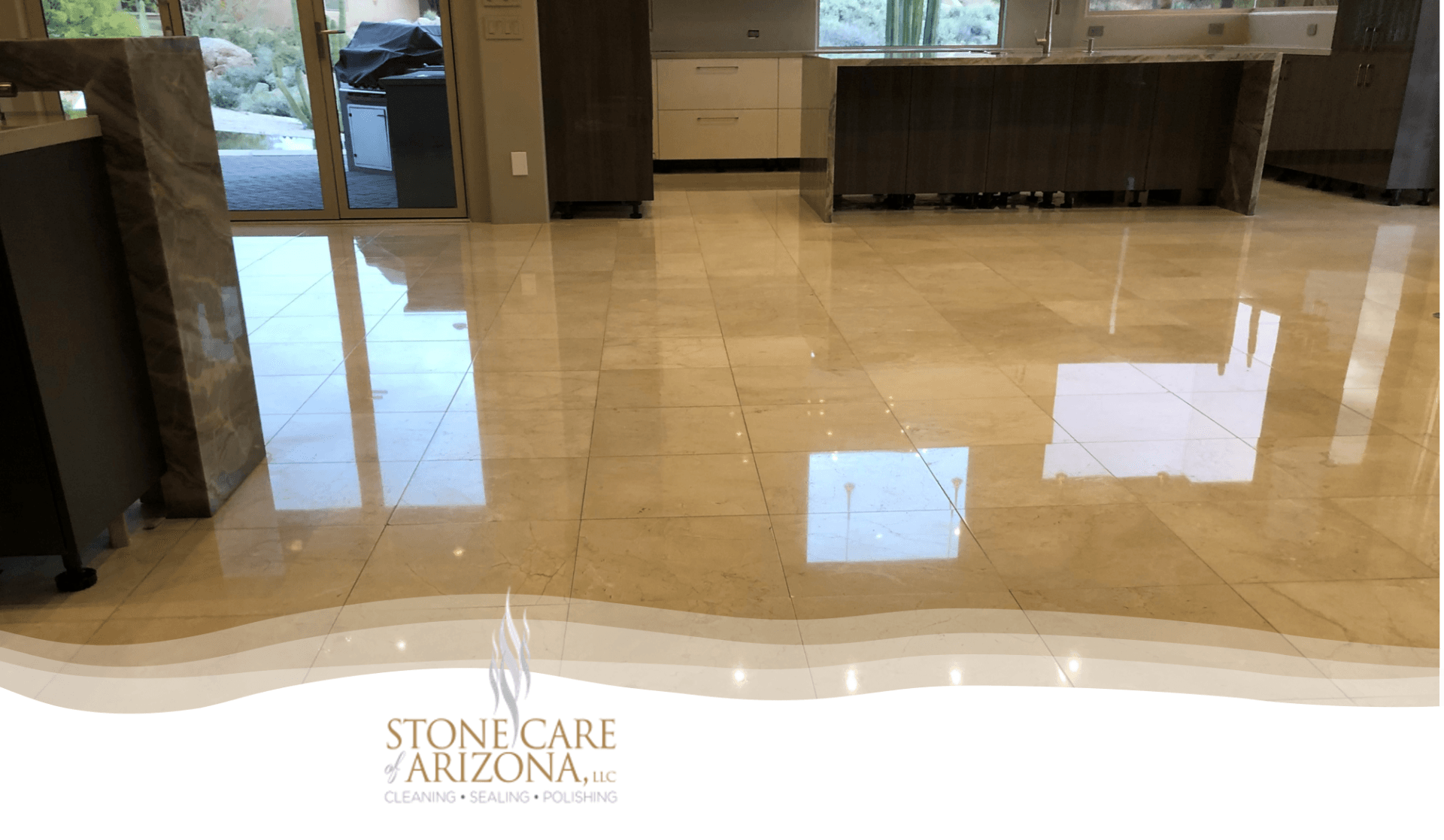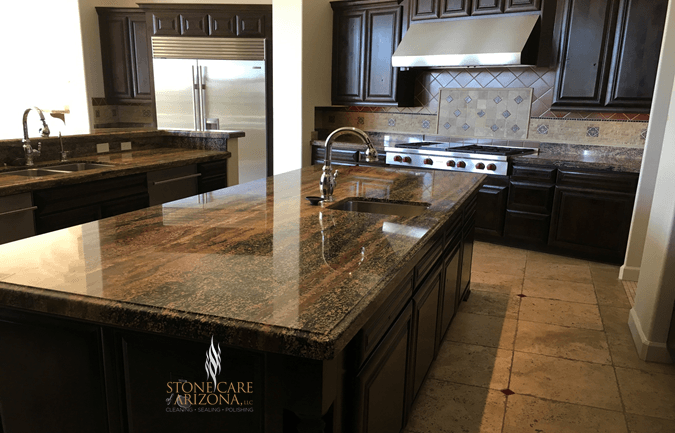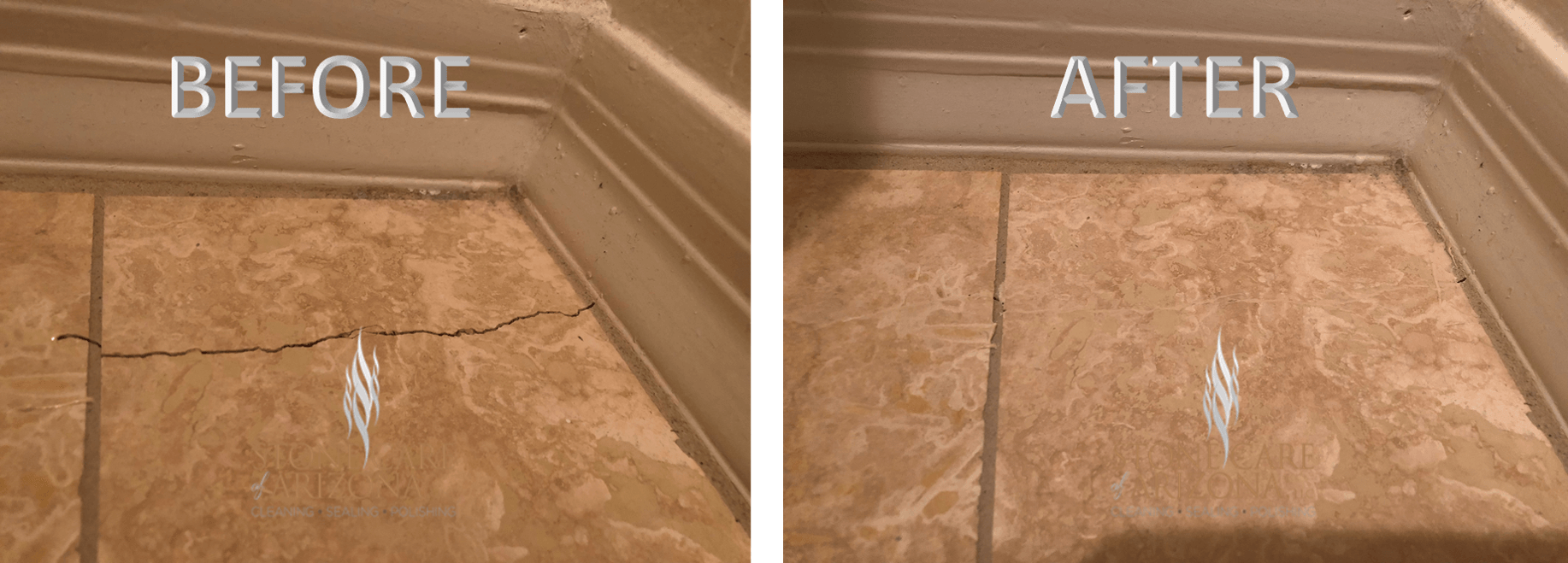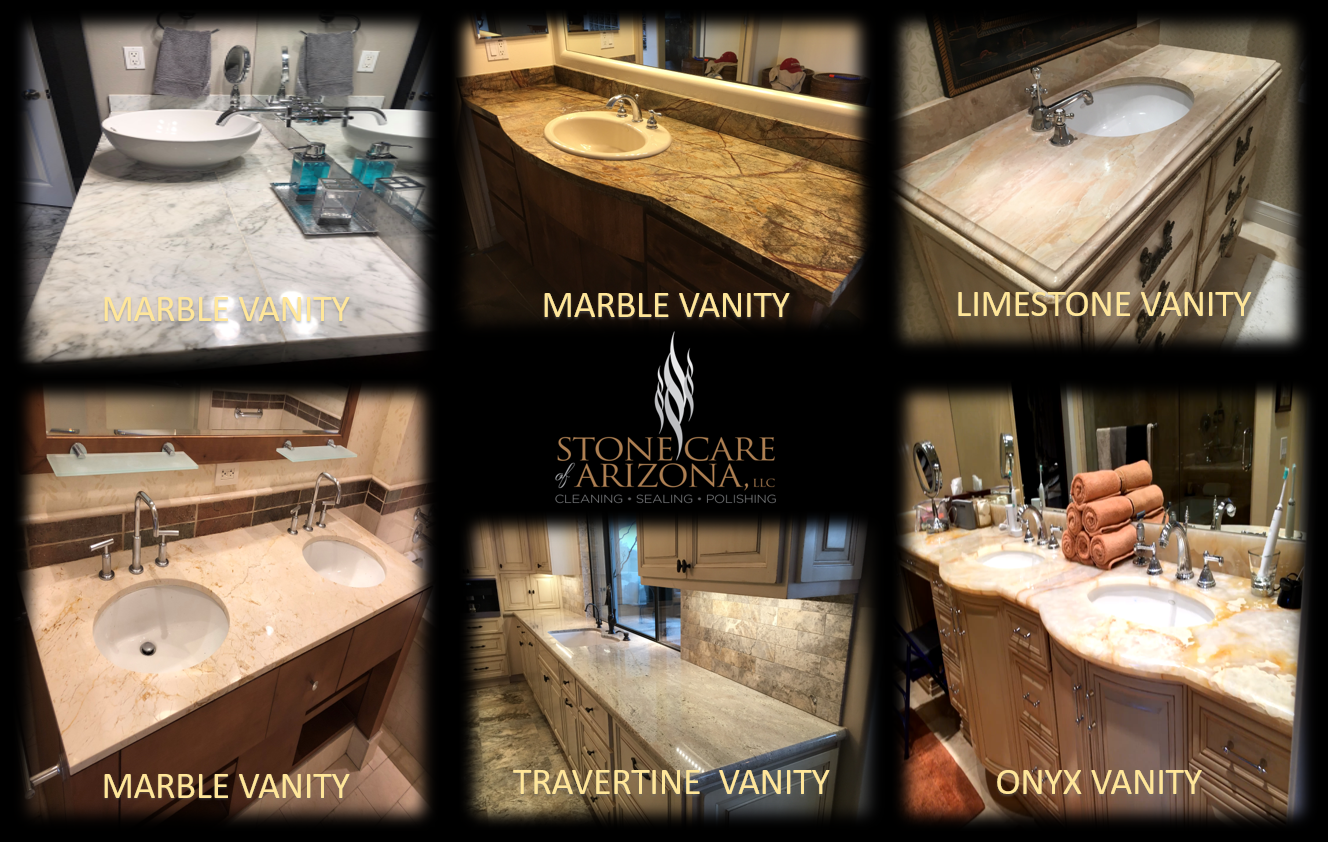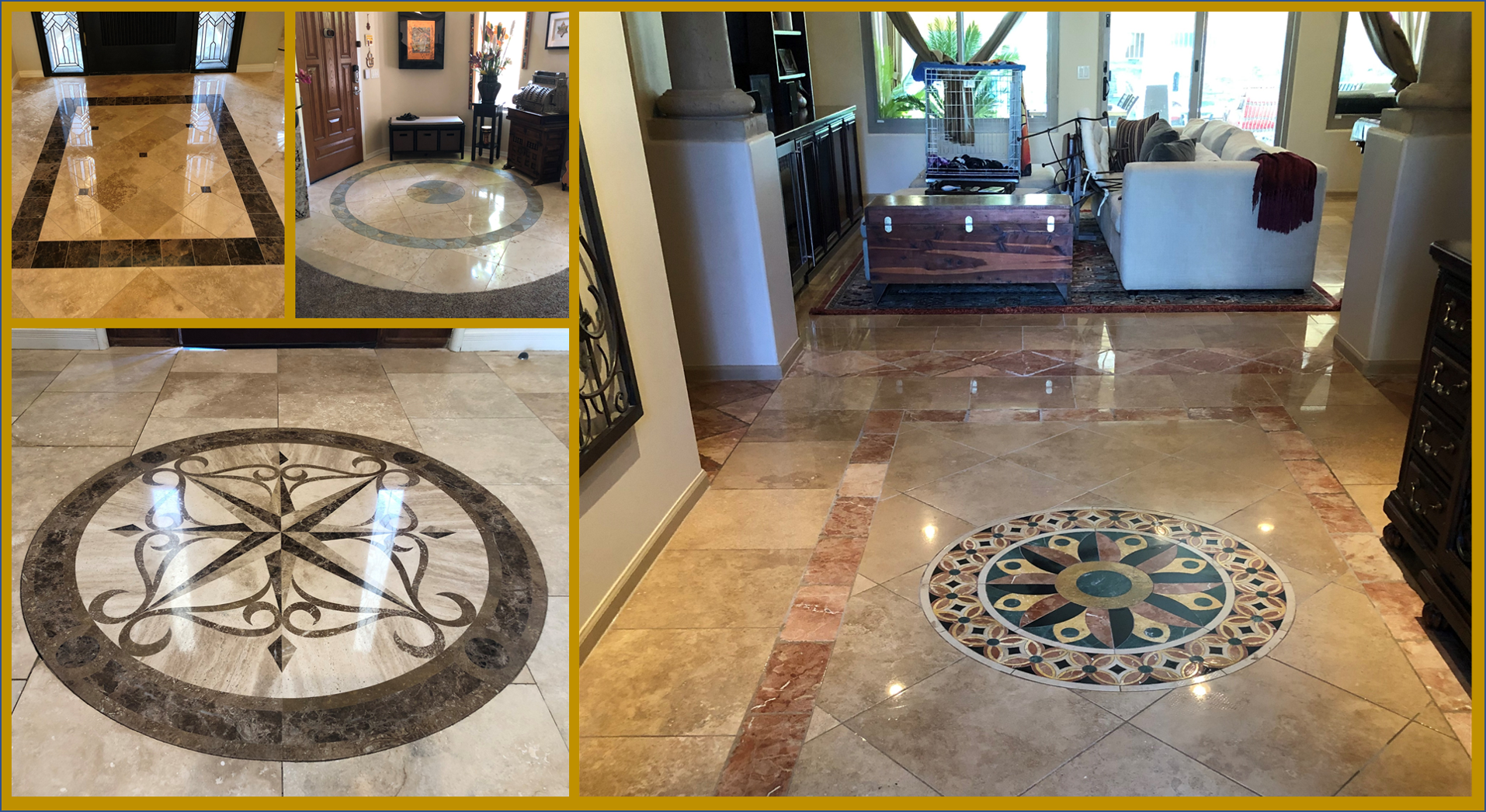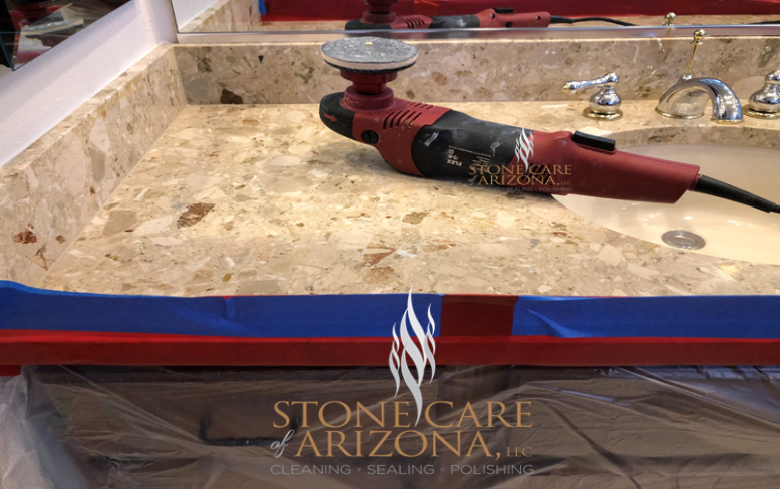Travertine Cleaning and Sealing in Paradise Valley
One of the fundamental choices that a homeowner can make is hiring the right natural stone care company to professionally polishing their Travertine, Marble, and Limestone floors. Travertine is a sedimentary natural stone that is harvested from outside in a dormant river bed. The acid-based springs will erode and create holes and troughs of varying sizes. Depending on the type of Travertine that is manufactured will determine the type of Travertine filled used. Polished Travertine will be filled with epoxy fill and "honed" Travertine is filled with a cementitious grout material. The size of the naturally occurring holes and troughs indicates whether or not the Travertine is a "premium," "commercial" or "select cut."
The video below will show you how Travertine tile natural occurring holes/voids and troughs are filled. Check out, it's very interesting!
There are many Travertine cleaning, honing and polishing methodologies in Scottsdale, Paradise Valley, Cave Creek and Fountain Hills, Arizona. Stone Care of Arizona, the Arizona stone care expert wants to share Travertine polishing methods commonly used in the marketplace in Arizona to help provide better education.
The polishing methods are not limited to the following:
1. MECHANICAL POLISHING METHOD
Travertine polishing begins after a floor has been professionally cleaned and honed. Once cleaned and honed the Travertine is light mechanical polished with the goal of "preserving" an existing Travetine floor that does not require a higher shine. The mechanical Travertine polishing method is a true "chemical-free" method. Not all homeowners want their Travertine with a high shine. When this is the case, the homeowner chooses a matte (low sheen) or a satin finish (medium sheen).
HOW DOES STONE CARE OF ARIZONA MECHANICALLY POLISH TRAVERTINE FLOORS:
Mechanical polishing is the method of applying water with either a resin, screen and or diamond dipped pads to create "rotary friction" on the Travertine, Marble, and Limestone that leaves a discrete scratch pattern. The rule of thumb to remember, the lower the grit pattern the deeper the cut and the finer polishing steps will leave a tighter grit pattern leading to reflectivity (low to medium shine) on the Travertine floor.
The illustration below is used as an example of the Travertine polishing method used by several natural stone care companies to create a polished appearance.
1. Resin pads range for honing in grit sizes such as 50, 120, 220, 400, 800 and polishing grits sizes such as 1000, 1500, 3000, 8000. Diamond dipped pads range in grit sizes range from 150, 200, 400, 800, 1500, 3000, 8000 and 11,000. Screens also come in grit patterns for polishing Travertine, Marble and Limestone floors.
2. CHEMICAL POLISHING METHOD
When a client wants a high shine on their Travertine floors, Stone Care of Arizona, the Arizona stone care expert will use a unique polishing powder. There are several Travertine polishing powders on the market to choose from. Travertine polishing powders are color-coded based on their respected manufactures and country of origin. For example, the white polishing powder is made in the USA, the green polishing powder is made in France and yellow polishing powder is made in Italy. Many are formulated using crushed beetles, surfactants (wetting agents), some use either aluminum oxide and serum oxide and fine diamond abrasives (polishing diamonds).
When Travertine, Marble, and Limestone polishing powder is applied on a floor with water and a high-quality polishing pad it "initiates a discrete chemical action" on the surface of the Travertine, Marble, and Limestone tile.
Here is a special invitation to take a peek at one of our Travertine polishing and sealing jobs.
Stone Care of Arizona, the Arizona stone care expert would love to help you fall in love with your floors, shower, and countertops, give us a call at
480-625-0557. We look forward to meeting you and answering your valuable questions.


